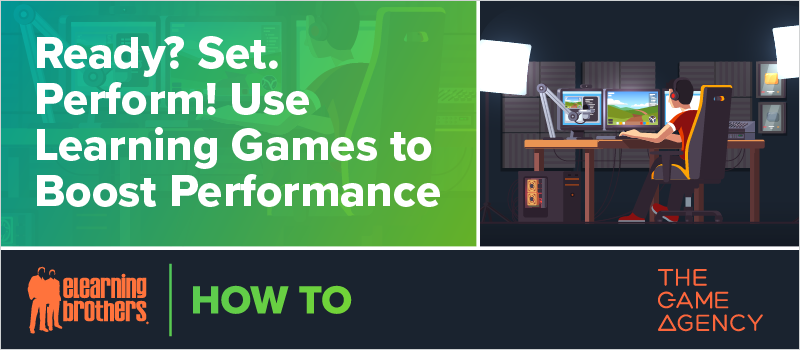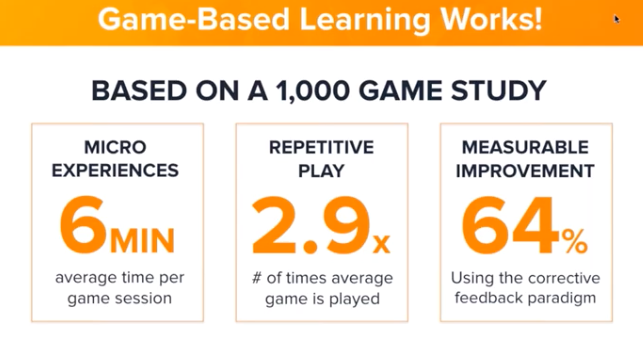
Want to learn which types of games make the most sense for your learning content?
Stephen Baer of The Game Agency and Chris Willis of eLearning Brothers joined us for a webinar talking through aligning game types to learning and performance goals.
Stephen and Chris also covered:
- What makes an effective learning game?
- Mapping game action to performance objectives and desired outcomes
- Leveraging game-based learning to increase engagement and keep learners coming back for more!
Game Design Considerations
Stephen quickly walked through key considerations for learning game design at the beginning of the webinar. As you’re building your games, you want to include these elements:
Story Arc
Not all games will include a story arc, but for customer service training or other scenario-based games, give some thought to your characters and storyline.
Relevant Choices
For a branching game or multiple choice question, provide realistic options for the learner to choose from. Off the wall, crazy choices are funny to put in when you’re developing a game but are a missed opportunity for a teaching moment.
# of Choices
Too many choices lead to decision paralysis. Limit your game to a handful of choices so learners can make quick decisions and dive into the game.
Realistic Voice
As you’re writing the content, it should feel like what a learner would hear or see in the real-life situation of what you’re having play out online. Bring in a subject matter expert if you need to.
Useful Feedback
Give contextual feedback that shows a learner why the choice they selected is right or wrong and what would have been a better choice.
Visuals
Are you going for a minimalistic look or realistic videos and images? There are many stylistic paths to go down and you should take the time to make a considered choice at the beginning of game development.
Benefits of Learning Games
Games provide many benefits for training your workers:
- Games are engaging in a world full of distractions
- The elements of gameplay are designed to increase attention and sustain focus
- Drive improvement and provide ongoing feedback
- Result in greater retention than lectures and articles

Aligning Games With Performance Objectives
Common performance objectives include recall, empathizing with others, synthesizing information, visualizing, etc. Chris gave attendees a brief overview of the levels in Bloom’s Taxonomy and where different performance objectives fall on the chart. Then she and Stephen shared some pairings of games with different levels of Bloom’s Taxonomy.
For example, games from The Training Arcade® like Jeopardy!® or Jump or Trivia are great ways to test people’s recall of information (Bloom’s Taxonomy Level 1).
To test whether your learners have advanced to Bloom’s Level 2 (explaining ideas or concepts), you could include a word scramble game or a game that requires the learner to sort different items or words into the right category or order.
Watch the webinar recording now to see which games align with higher levels of Bloom’s Taxonomy.
All the games featured in this webinar are easy to customize and embed in an authoring tool course. You can also play them online in a web browser or track analytics with an LMS!
Sign up for a free trial of The Training Arcade® to try it yourself.








